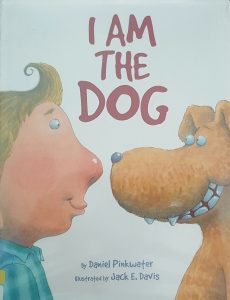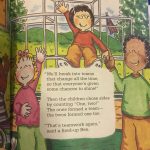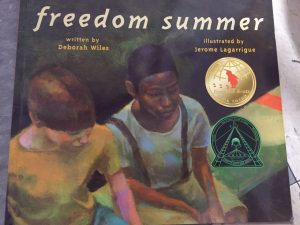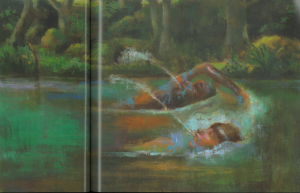

Title: My Friend Rabbit
Author: Eric Rohmann
Illustrator: Eric Rohmann
Publishers and Year: First Scholastic Printing, 2003
Number of pages: 30
Genre: Fiction
My Friend Rabbit tells the story of a rabbit’s attempt to help her friend mouse. The rabbit means well and tries incredibly hard to help her friend mouse. She enlists the help of many other animals (mostly against their will). However, no matter what rabbit does, trouble never seems to be far behind.
I view this book as a door because it models for children some of the core values of friendship. The story models what it looks like to walk through a mess with someone and love them through it. This concept provides an opportunity for children to take hold of this value for themselves and incorporate that into their own relationships, even if in small ways at first.
Power is distributed in this book in a number of ways. On the first few pages, rabbit looks huge when compared to mouse. This shows the increased power rabbit has over mouse. However, mouse is always higher than rabbit on the page, which shows us how highly he is esteemed. As the story goes on, rabbit struggles more and more to help his friend. As this happens, rabbit’s character appears smaller and smaller. The other animals appear very large and powerful, sometimes taking up more than one page.
The author also used very little text in the book creating space for the pictures to tell a story of their own. The pictures agree with and add to the story. The pictures show the hard work and movement of rabbit. Throughout the text, rabbit is continually moving towards the left of the page. In every page he makes more and more progress left which signals gaining security. Throughout the process he goes from ground level to standing on top of all of the animals in power and security. Eventually, however, trouble follows and rabbit is left at the bottom once again. The visual process of progression and power is very obvious, however, and seems very intentional.
The visual progression of rabbit in power and stature speaks volumes of his goal of helping a friend. The text plays a less important role in the story, since the majority of the story is told through the illustrations. Overall, children can learn much about friendship from this book. The story of rabbit and mouse teaches us what it looks like to go out of our way to serve a friend and to see someone else’s need as greater than our own. This is an excellent lesson for children and adults alike.













![2016-05-13_14.07.28[1]](https://blogs.iwu.edu/lrbmt2016/files/2016/05/2016-05-13_14.07.281-300x284.jpg)
![2016-05-13_14.08.39[1]](https://blogs.iwu.edu/lrbmt2016/files/2016/05/2016-05-13_14.08.391-300x149.jpg)










